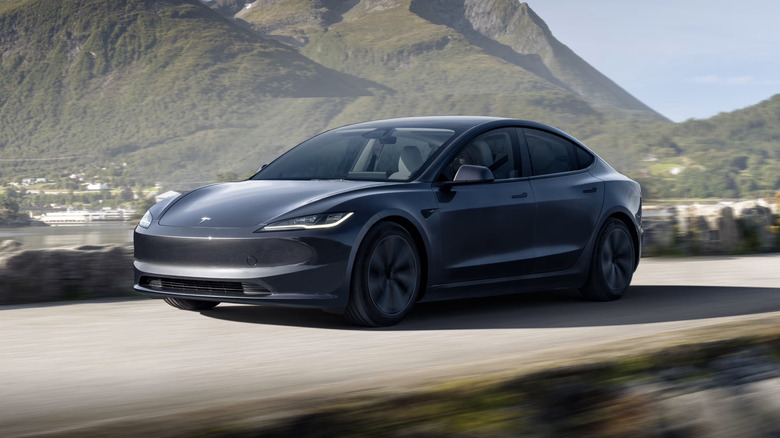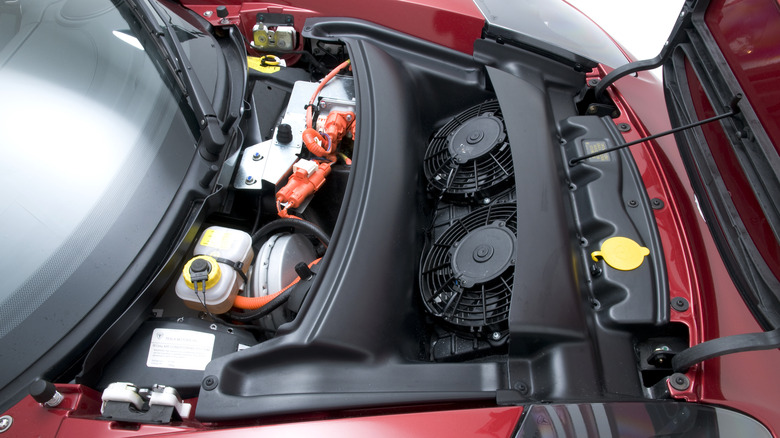Do Teslas Have Engines? How Their Electric Motors & Drivetrain Work
Because gas-powered vehicles have dominated the market for so many decades, there may be people out there looking to purchase their first electric vehicle who don't fully understand how EVs work. It can be startling for new buyers to open up the hood of a vehicle made by Tesla, the best-selling luxury car brand in the U.S., and not see a big engine with the pistons and cylinders that make cars move. It is not impossible that these folks see the Tesla's frunk instead of an engine and assume that the vehicle doesn't even have one. Well, these people would actually be right.
A Tesla — or any other electric vehicle — has no need for a conventional internal combustion engine. Conventional engines convert gasoline into energy: The fuel mixes with air, then combusts to move the pistons within the engine and turn the vehicle's crankshaft, driving the wheels. With a fully electric power source, there is no substance that needs to be chemically converted for use. Nothing needs to mix with air to burn in order for things to run. There is no engine to be found. What can be found, though, is an electric motor, and this is how a Tesla is able to run. However, the electric motor and battery are separate entities, and a whole system exists to maneuver energy from one to the other.
A power conversion
Even though there is no substance that needs to be chemically altered from a liquid to a gas like gasoline, the energy that is being stored in the Tesla's battery does need to be altered for it to operate the vehicle. There are two different kinds of electrical power: AC and DC (now you know why the band is named that). AC stands for alternating current, which means that the direction of the electrical charge moves back and forth. DC — direct current — flows in one direction. The electricity stored in a Tesla battery is DC power, but the vehicle's motor requires AC power.
Tesla solves this issue with an inverter that converts DC to AC, providing the power for the vehicle's induction motor to operate the wheels. In essence, this inverter serves the same function as an engine. A second inverter reverses the process to charge your vehicle, converting the AC power carried in your local power grid to DC power. These are the same kinds of conversions that happen when you charge your laptop or cell phone. At the end of the day, it's a simple, proven process, and it also happens to leave much less of a carbon footprint than operating a gas-powered vehicle. Now that you know how EVs work, it is just a matter of choosing which Tesla model is best for you, or checking out some of the many other electric vehicles that qualify for the 2024 EV tax credit.

